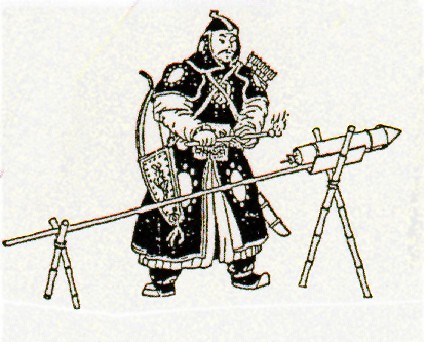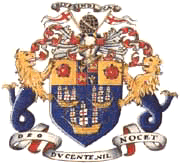begin quote from:
https://www.brown.edu/Departments/Joukowsky_Institute/courses/13things/7687.html
Joukowsky Institute for Archaeology & the Ancient World
Brown University
Box 1837 / 60 George Street
Providence, RI 02912
Telephone: (401) 863-3188
Fax: (401) 863-9423
Joukowsky_Institute@brown.edu
“Gunpowder,” as it came to be known, is a mixture of saltpeter (potassium nitrate), sulfur, and charcoal. Together, these materials will burn rapidly and explode as a propellant.
Chinese monks discovered the technology in the 9th century CE, during their quest for a life-extending elixir. The key ingredient, saltpeter, had been in use by this same culture since the late centuries BCE for medicinal purposes. It was found to be incendiary and immediately applied to warfare.
The Mongols soon emerged as an ambitious and violent society, and their conquests and invasions acted as a vehicle by which gunpowder would spread to the rest of the world. It is documented that the technology had reached the Middle East by the 13th century CE, at which point traders as well as crusaders would have come into contact with it.
The main problem with gunpowder at this time was that the ingredients had to be measured properly in order for the mixture to ignite properly and explode. Thus, knowledge of the required materials was not so much the technology as was the knowledge of the formula.
Perfecting the formula can be noted as the first major landmark in technological development. The most effective ratio (very approximate) was believed to be 1 part sulfur: 3 parts charcoal: 9 parts saltpeter, according to 13th century Arabian documents. Sir Roger Bacon had been experimenting with something 29.5% sulfur, 29.5% charcoal, and 41% saltpeter, however it was eventually found that the best ratio was 10:15:75 (the modern formula). The next big improvement came when 14th century Europeans began adding liquid to the mixture, forming a paste that would dry and could be ground into balls––this came to be known as “corned powder.” This greatly increased the practicality of the primitive bombs and guns, as corned powder was more durable, reliable, and safe (the dried paste would insure that almost all of the ingredients would ignite at the same time and explode as one).
As the European powers emerged into the Early Modern Period, saltpeter came into high demand as the key tool for warfare, or the “commodity or empire,” as one author put it. The British and Dutch were the key players in this act (as France and Spain could self-sustain their saltpeter supply at this point). India was found to be rich in the demanded resources, and thus various overseas trading companies were established to further the European interest. Examples include the English East India Trading Company, the Dutch East India Company, the French ‘’Compagnie des Indes orientales’’, and the Prussian Bengal and Asiatic Companies. This competition must quickly be compared to the scramble for oil in the 19th and 20th centuries, and was the first time that an element of a technology caused the world to mobilize to such an extent.
 –The Elixir of Life.
–The Elixir of Life.
 –East India Trading Co.
–East India Trading Co.
Image sources: http://www.allstar.fiu.edu/aero/images/fire.gif, http://www.maritimeheritage.org/images/eastindia.gif
Next: Advancement: Bigger Explosions.
Back to A History of Explosives: Chronology.
Back to the bomb main.
No comments:
Post a Comment